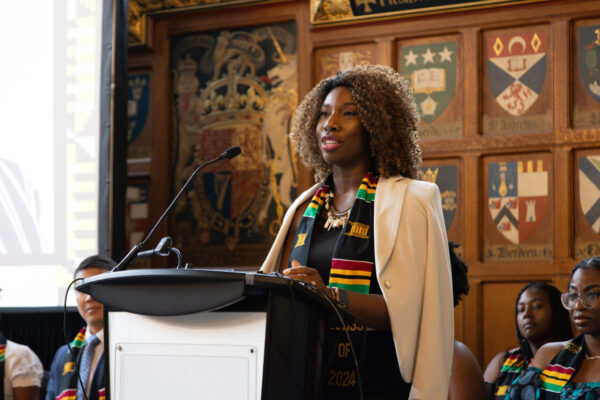UTM researcher provides a richer understanding of human evolution


What we know about human evolution has largely been attributed to natural selection – how species have evolved by adapting to their environment. As a paleoanthropologist, Lauren Schroeder encourages us to reconsider the adaptationist paradigm model.
In a co-authored journal article to commemorate the fiftieth anniversary of the Journal of Human Evolution, Schroeder provides a richer understanding of human evolution through nonadaptive processes – particularly through genetic drift and gene flow.
“We’re not completely breaking the model but looking at how to incorporate other evolutionary processes into our ideas of human evolution. We know that some have been overlooked,” says Schroeder, an associate professor in the department of anthropology at the University of Toronto Mississauga.
Notably, the article highlights that natural selection, gene flow, genetic drift, and mutation – the four processes of human evolution – should not be considered separately. Gene flow and genetic drift, seen in the morphology of the genus Homo, are key to deepening our understanding.
Nonadaptive processes are difficult to identify in fossil records because ancient fossils tend to have no DNA. This leaves researchers turning to other methods, like morphology, to document variation.
“From ancient DNA analysis, we know that Neanderthals and humans interbred. When we have fossils with no DNA, we only have morphology to work with,” Schroeder says.
Hybrid Neanderthal fossils have been vital in providing answers that older fossil records can’t provide. This is where gene flow – when genes travel from one population to another – comes in. Evidence published in 2010 shows that gene flow was more common than previously thought.
“There have been cases in the Neanderthal-human space where we have found fossils that look like hybrids – they have human and Neanderthal morphology. Through ancient DNA work, we found that they are indeed hybrids,” Schroeder says.
“This means that the effect of gene flow and the variation of a population needs to be taken into account.”
Another example is genetic drift, the random change in frequency of a gene variant in a population. It is the foundation of the Neutral Theory, which states that most evolutionary changes are caused by random occurrences – not natural selection.
“There has always been a big debate in evolutionary biology about the importance of natural selection and genetic drift in causing evolutionary change. The question is how we find it in the fossil record, especially when we don’t have genetic data.”
To find the answers, Schroeder uses quantitative genetics, a subfield of population genetics that studies the evolution of measurable traits, like height. Correlations between genetics and morphology allow researchers to assess morphology without genetic information.
The early evolution of the genus Homo, which emerged 2.8 million years ago, is characterized by variation in fossils. In the past, this has been attributed to natural selection. After applying quantitative genetics methods, Schroeder found that variations in the cranium are more consistent with neutral evolution.
“Because we see traits that can be identified as adaptations, and differentiate those traits from ones that seem neutral, it’s reasonable to assume that not all of the morphological variation of the genus Homo can be attributed to natural selection,” Schroeder says.
“Now we can say there are multiple evolutionary processes, and here are the methods to look at them.”
The commemorative paper, which also highlights the authorship demographics and practices of the Journal of Human Evolution, has opened another research interest for Schroeder – to look deeper into what has been a western (and male) dominated industry.
Now an associate editor of the journal, Schroeder has also co-authored a paper, currently in review, that examines the history of narrative in the evolution of the genus Homo from a socio-political context.
“When you don’t have a diverse group of people doing research, there is a loss to the field. The history of paleoanthropology and who was studying these topics and when are a major interest.”










